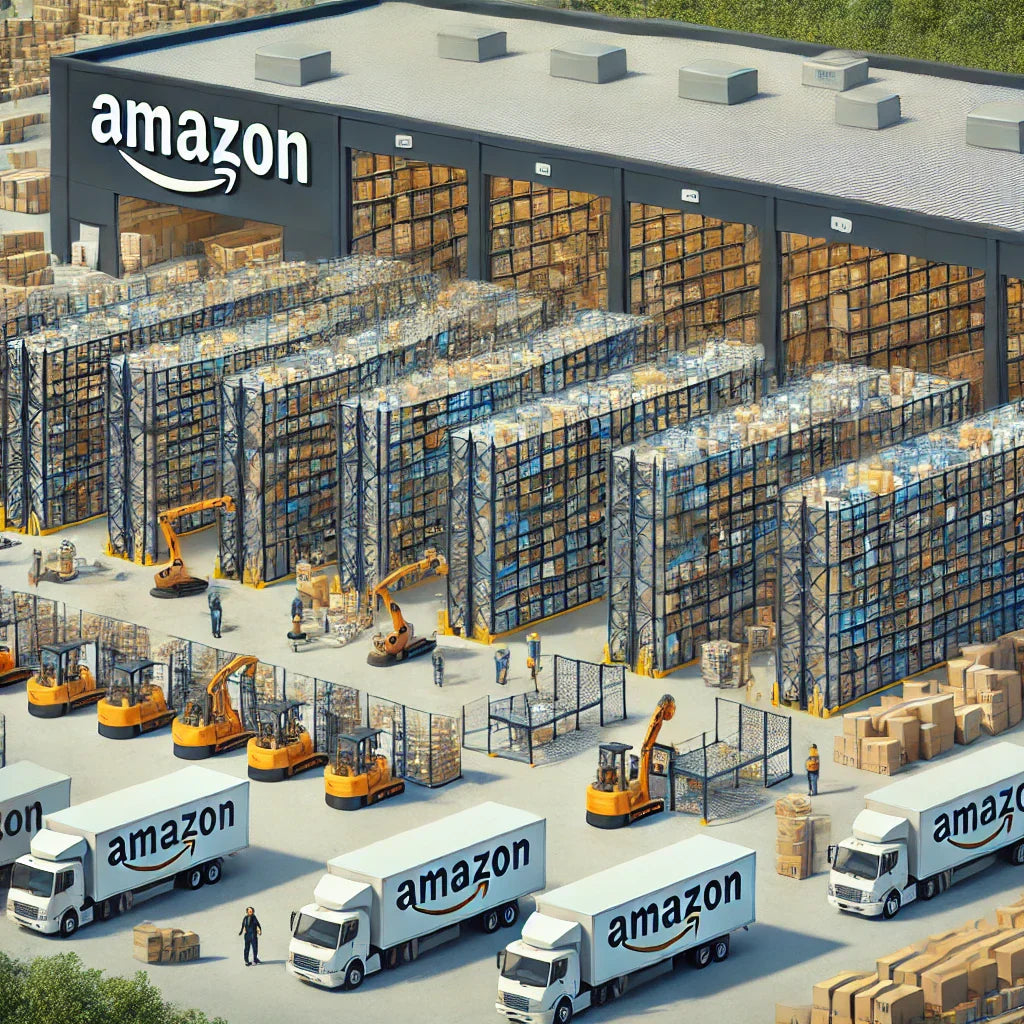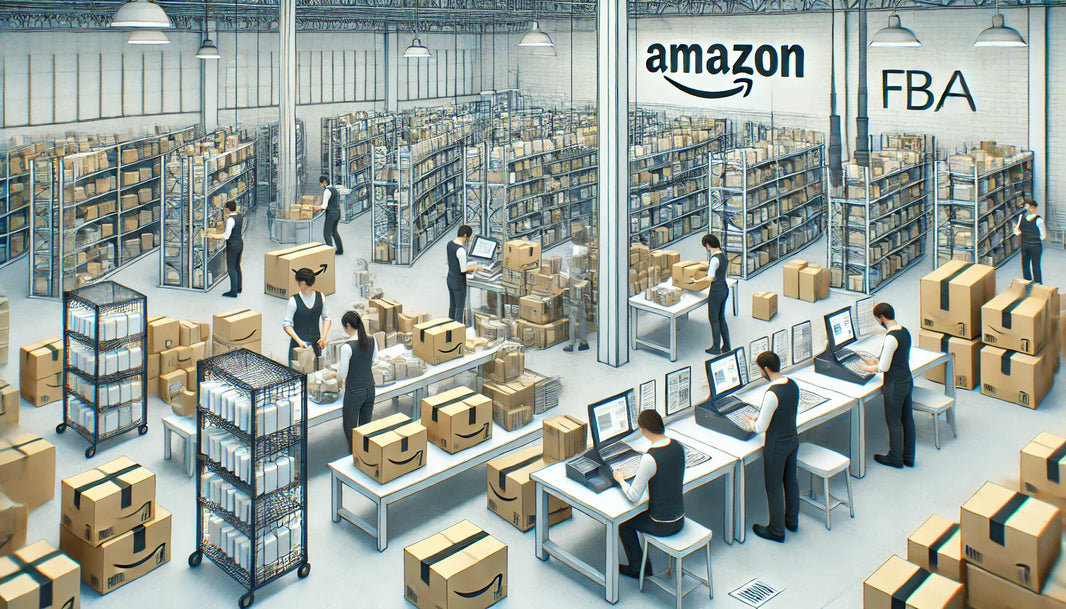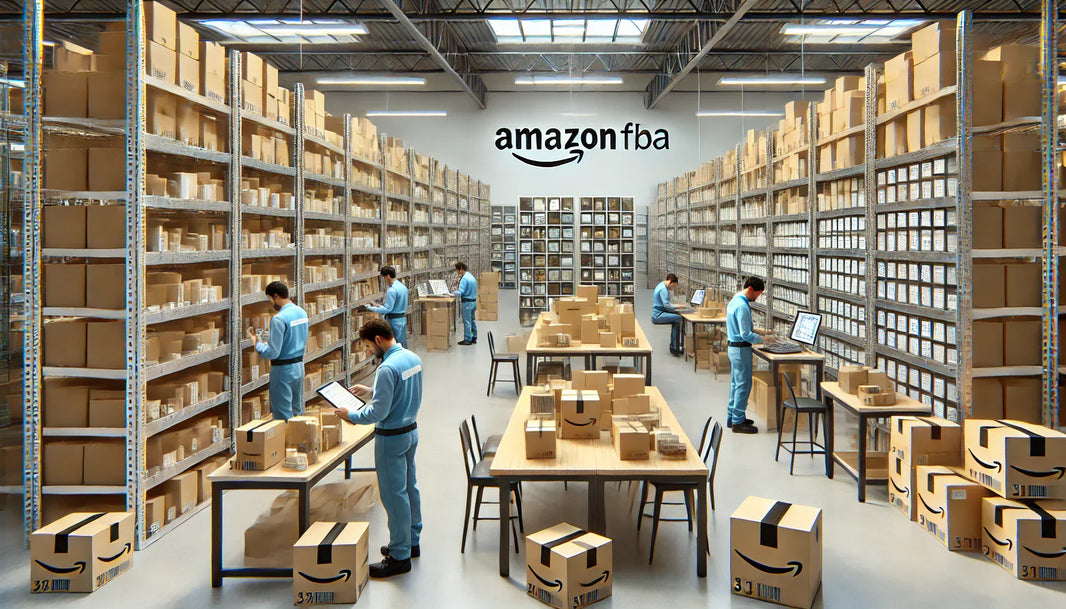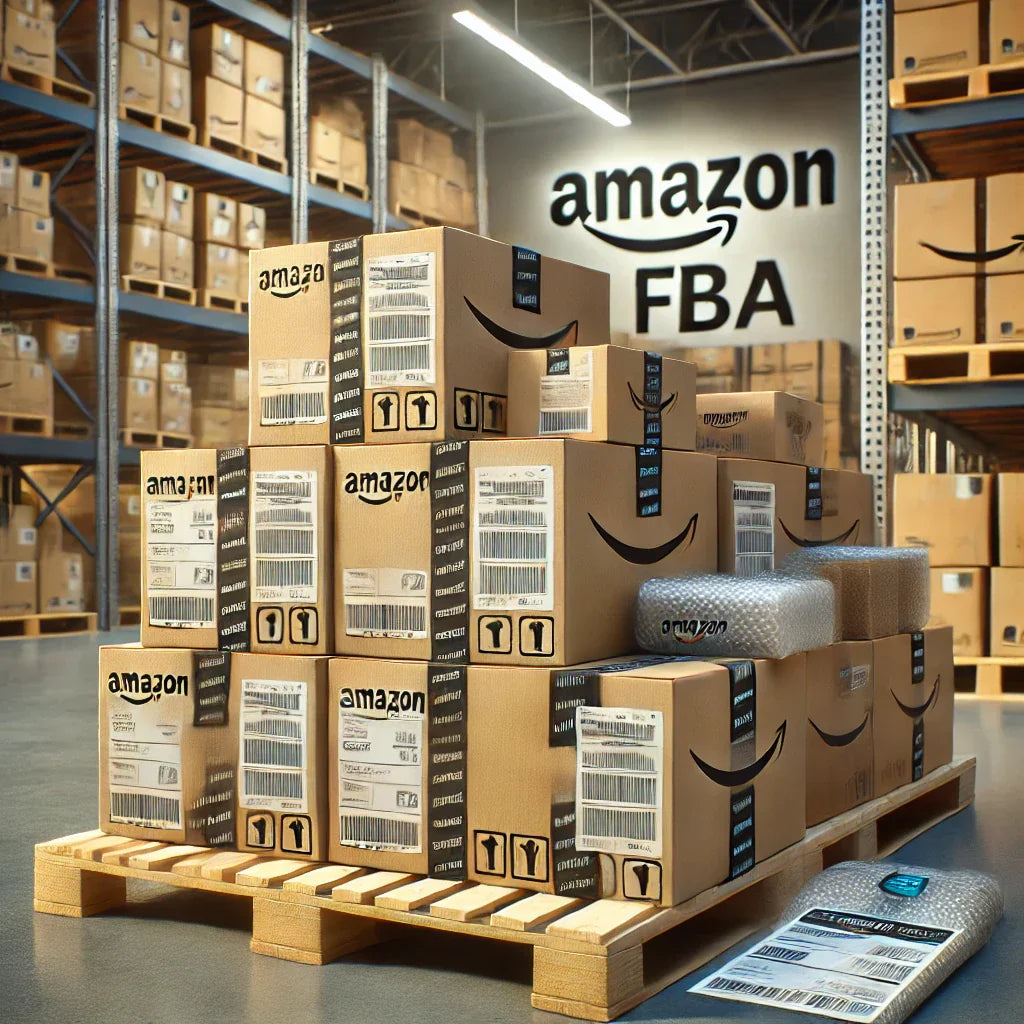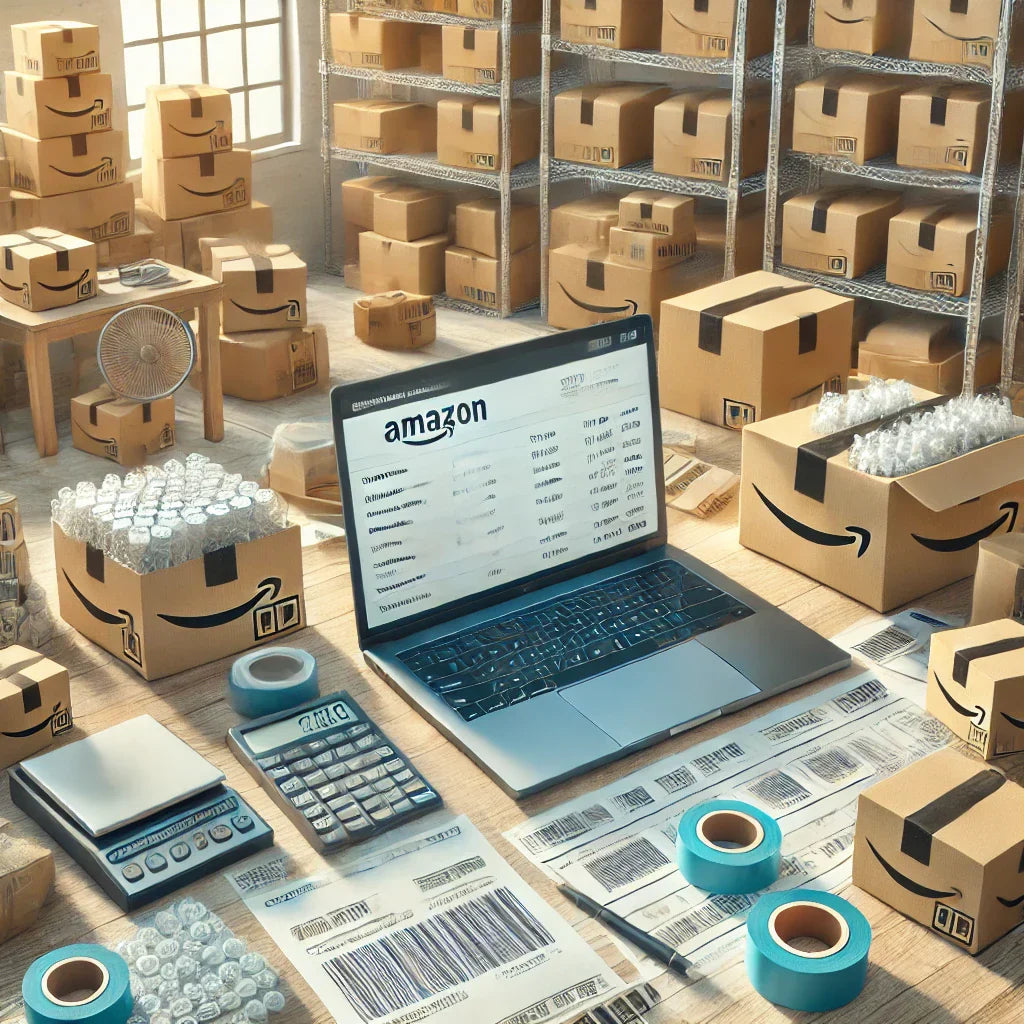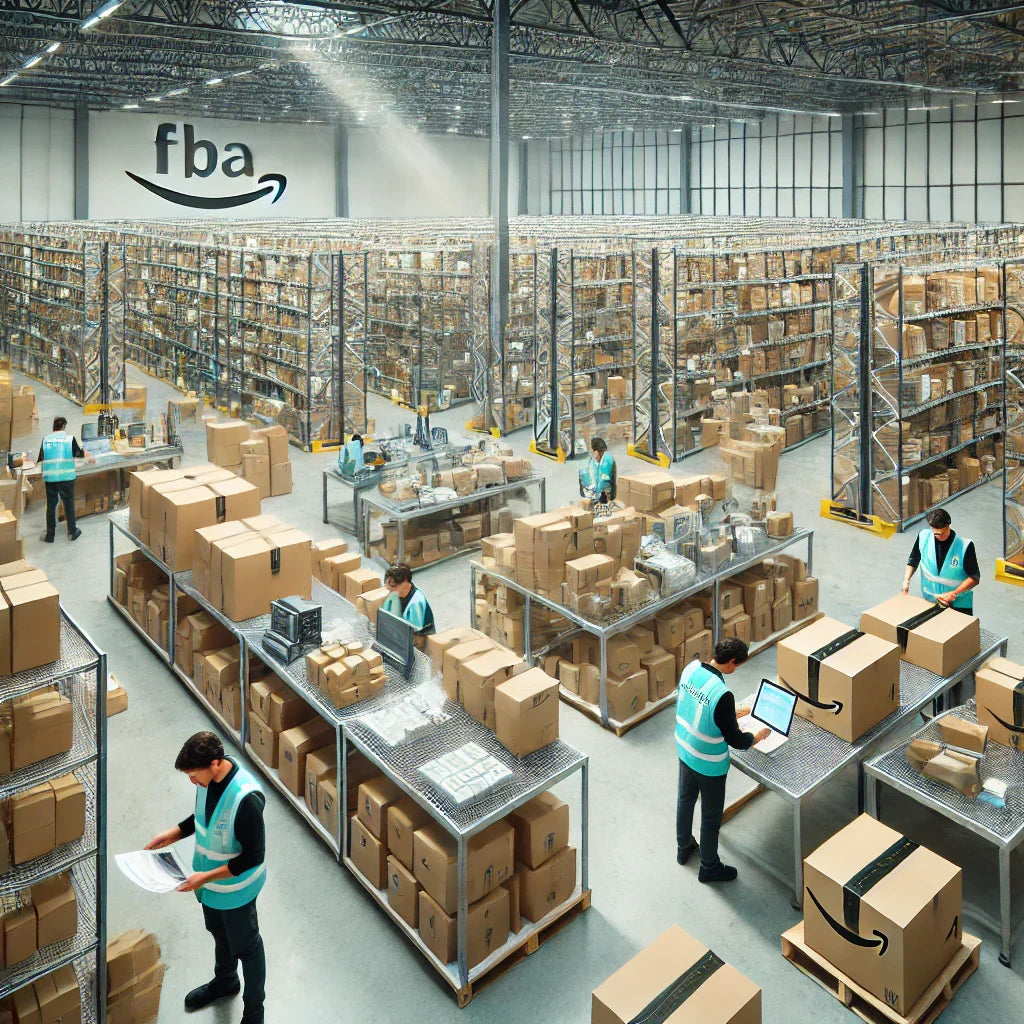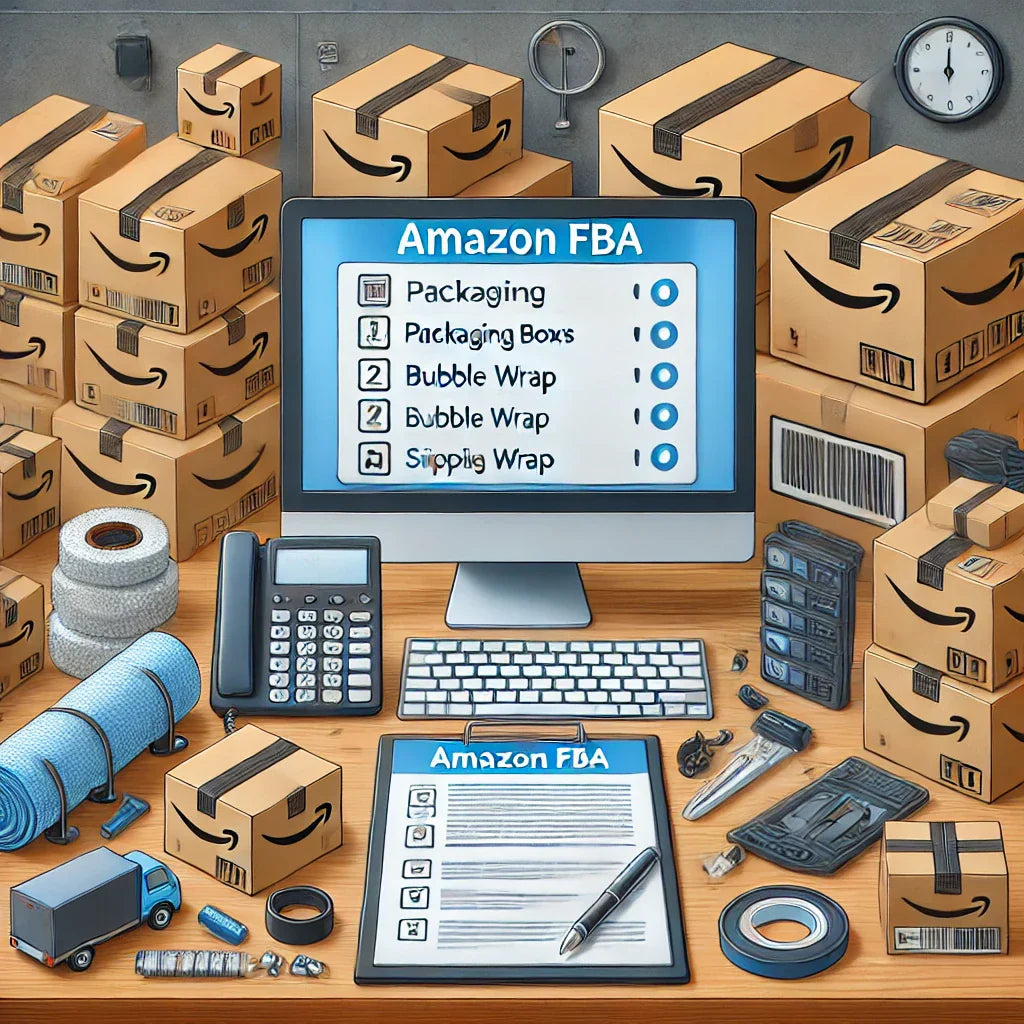Amazon’s fulfillment centers are pivotal components in the company's extensive and efficient supply chain. Strategically distributed across various locations, these facilities enable Amazon to meet the growing demands of e-commerce and ensure rapid delivery to customers worldwide. By understanding the specific addresses and functions of these fulfillment centers, businesses and consumers can better appreciate the infrastructure that supports Amazon's operations. In this article, we will explore the network of Amazon fulfillment centers, highlight key locations, and explain how this expansive logistical framework impacts the delivery ecosystem and customer experience.

1. What is an Amazon Fulfillment Center?
An Amazon fulfillment center serves as the heart of the company’s global distribution strategy. In essence, these centers are large-scale warehouses designed to store, manage, and ship a wide variety of products directly to customers or to Amazon’s partner sellers. Unlike traditional warehouses, which may only store goods, fulfillment centers are integrated with advanced technology and logistics processes. Here, automated systems and robotics often play a critical role in the efficient handling and shipping of millions of items daily.
How It Differs from a Warehouse
Although the terms "fulfillment center" and "warehouse" are sometimes used interchangeably, they differ significantly. A warehouse primarily serves as a storage location where products remain until they are shipped to another facility or retailer. In contrast, an Amazon fulfillment center not only stores items but also plays an active role in the picking, packing, and distribution processes. With Amazon’s growing investment in artificial intelligence and machine learning, these centers are continually evolving, enhancing efficiency and productivity.
Beyond the foundational understanding of Amazon’s fulfillment centers, it’s important to delve deeper into the operational specifics that make these facilities unique and effective.
Detailed Processes Within a Fulfillment Center
- Receiving Goods: One of the first steps in the fulfillment process involves receiving goods from suppliers or third-party sellers. Each shipment is checked for accuracy, and items are scanned into Amazon’s inventory management system. This step is critical, as it ensures that the products are logged and ready for immediate distribution.
- Storing Inventory: Unlike traditional warehouses where items are stored in predictable and orderly ways, Amazon employs a random storage system, also known as "chaotic storage." This method may seem inefficient at first glance, but it leverages complex algorithms to ensure optimal space usage and quick access. Items are placed wherever there is space, and their locations are recorded digitally for retrieval.
- Picking and Packing: The picking process involves locating items using handheld devices that direct employees to the correct location within the warehouse. Once picked, items are sent to a packing station, where packaging machines and human workers prepare them for shipping. Special care is taken to ensure that fragile or high-value items are packaged securely.
- Quality Control Measures: Throughout these processes, quality control is paramount. Items are routinely scanned and checked to ensure they match customer orders. Automated systems alert workers if any discrepancies are found, minimizing the risk of incorrect shipments.
2. The Evolution of Amazon's Distribution Network
Amazon started with a simple distribution model but quickly realized that scaling operations to meet global demand required a sophisticated network of strategically placed fulfillment centers. The expansion began in the early 2000s and has since transformed into one of the world’s most advanced distribution systems. Today, Amazon operates hundreds of fulfillment centers worldwide, each designed to optimize delivery times and reduce shipping costs.
Key Milestones in Expansion
- Early Years: The first few centers were focused primarily in the United States. As online shopping began to rise, Amazon expanded its footprint to cater to a growing customer base.
- International Growth: Amazon’s expansion soon reached international shores. Fulfillment centers in Europe, Asia, and South America allowed the company to provide local distribution and minimize shipping delays.
- Technology Integration: By the 2010s, Amazon was investing heavily in automation and robotics, transforming traditional warehousing into technologically advanced fulfillment centers.
Amazon’s transformation into a logistics powerhouse didn’t happen overnight. The company’s strategic investments and continuous innovation have played crucial roles in developing a distribution network that can rival some of the largest logistics companies in the world.
The Role of Acquisitions in Expansion
Amazon’s growth has also been fueled by strategic acquisitions. For example:
- Kiva Systems Acquisition: In 2012, Amazon acquired Kiva Systems, a robotics company that revolutionized warehouse operations. Kiva robots, now known as Amazon Robotics, are used extensively to automate tasks and improve efficiency.
- Whole Foods Market Acquisition: Acquiring Whole Foods Market in 2017 gave Amazon access to a network of physical stores, enabling it to expand its distribution and delivery capabilities, particularly in the realm of grocery deliveries. This acquisition also facilitated Amazon Fresh and Prime Now services.
The Role of Prime Membership
Amazon Prime has been a game-changer in shaping the company’s distribution strategies. With over 200 million members worldwide, Prime’s promise of fast and reliable shipping has necessitated the continuous enhancement of fulfillment and distribution capabilities. To uphold this commitment, Amazon has invested heavily in creating regional fulfillment centers designed specifically to serve Prime customers.
3. Strategic Locations of Amazon Fulfillment Centers
The locations of Amazon fulfillment centers are chosen based on complex logistics algorithms. Factors such as population density, proximity to major transportation hubs, and local market demand play a crucial role in site selection.
United States Fulfillment Centers
The United States is home to a vast network of Amazon fulfillment centers. Major locations include:
- California: As one of the most populated states, California hosts multiple centers, strategically located to serve the West Coast efficiently.
- Texas: The central location of Texas makes it ideal for nationwide distribution. Amazon’s centers in cities like Dallas and Houston streamline operations across the southern United States.
- New York: With its dense population, New York’s fulfillment centers ensure rapid delivery to the northeastern region.
International Fulfillment Centers
Amazon's global reach includes centers in:
- United Kingdom: Several facilities across England, Scotland, and Wales support the European market.
- Germany: As one of Amazon’s largest international markets, Germany hosts numerous advanced fulfillment centers.
- India: With a rapidly growing e-commerce market, India is a focal point for Amazon's expansion in Asia.
The careful placement of Amazon’s fulfillment centers is no accident. These facilities are strategically located to maximize efficiency and minimize delivery times.
Analysis of Major U.S. Regions
- West Coast Advantages: The West Coast, particularly California, plays a critical role in international shipping and trade. Ports like Los Angeles and Long Beach handle a significant amount of Amazon’s inbound international shipments. Fulfillment centers in this region act as gateways for products coming from Asia and are vital for distributing goods across the western United States.
- Midwest Hubs: States like Illinois, Indiana, and Ohio host several large fulfillment centers. The Midwest is advantageous for its central location, which makes it easier to reach various parts of the country within two days. Chicago, in particular, is a key logistics hub due to its extensive rail and trucking networks.
- Southeastern Expansion: The Southeast has seen rapid growth in fulfillment centers, particularly in states like Georgia and Florida. These centers cater to the growing population in the region and provide a logistical advantage for reaching both the East Coast and Gulf Coast markets.
International Fulfillment Center Highlights
- Europe’s Distribution Model: Europe presents unique logistical challenges due to varying regulations and languages across different countries. Amazon has addressed this by establishing multiple regional centers. For example, France, Spain, and Italy each have dedicated facilities that serve local and cross-border orders. Amazon’s ability to adapt its logistics to regional requirements demonstrates the flexibility of its fulfillment model.
- Asia’s Growing Network: Asia is not only a major manufacturing hub but also a burgeoning market for e-commerce. In addition to its presence in India, Amazon has fulfillment centers in Japan, Singapore, and China, which support both regional distribution and international exports. As e-commerce continues to grow in Asia, Amazon’s network is poised to expand further.

4. The Role of Fulfillment Centers in Amazon’s Ecosystem
Amazon fulfillment centers are integral to the company’s "last-mile delivery" strategy. This term refers to the final step of the delivery process, where products are shipped from a fulfillment center directly to the customer. The efficiency of this system relies on a seamless coordination of logistics and inventory management.
Inventory Management
Managing inventory across hundreds of fulfillment centers is a colossal task. Amazon uses data analytics and predictive algorithms to forecast demand and ensure products are stocked accordingly. The integration of machine learning helps in minimizing errors and ensuring that popular items are always available for immediate distribution.
Distribution and Logistics
The distribution network does not end with the fulfillment centers. Amazon also employs sorting centers, delivery stations, and partner carriers to complete the delivery process. The company’s investment in air cargo, including Amazon Prime Air, enhances its ability to manage rapid deliveries across continents.
To understand the role of fulfillment centers, it’s crucial to examine how they fit into the larger Amazon ecosystem and interact with various other components of the supply chain.
Partnerships and Third-Party Sellers
Amazon’s fulfillment centers are not just for products sold directly by Amazon. A significant portion of items handled in these centers comes from third-party sellers participating in the Fulfillment by Amazon (FBA) program. This program allows sellers to store their products in Amazon warehouses, where Amazon manages the picking, packing, and shipping processes.
- Benefits for Sellers: By using FBA, third-party sellers can tap into Amazon’s vast logistics network, offering faster and more reliable shipping to customers. Additionally, FBA items are eligible for Prime shipping, which can significantly boost sales.
- Challenges for Sellers: Despite the benefits, there are challenges associated with using FBA. Sellers must adhere to strict guidelines regarding product labeling and packaging. They also incur fees based on the size and weight of their items, which can impact profit margins.
The Integration with Amazon Fresh and Prime Now
Amazon’s fulfillment centers have also adapted to handle groceries and perishable items through services like Amazon Fresh and Prime Now. These specialized distribution centers are equipped with temperature-controlled areas for storing and shipping fresh produce, frozen foods, and other perishable goods.
- Last-Mile Delivery Innovations: The integration of Amazon Fresh and Prime Now has necessitated innovations in last-mile delivery. Amazon uses a combination of in-house delivery drivers and external partners to ensure that groceries arrive fresh and on time.
5. Advanced Technology in Fulfillment Centers
Amazon's fulfillment centers are renowned for their cutting-edge technology. Robotics, artificial intelligence, and machine learning work in tandem to optimize operations.
Use of Robotics
Robots are used extensively to move inventory throughout the warehouse, reducing the time it takes for human workers to locate and pick items. Amazon’s Kiva robots, for example, can lift entire shelves of products and transport them to packing stations. This reduces walking distances for employees and increases the speed of the picking process.
Machine Learning and AI
Amazon leverages AI for predictive analytics, inventory forecasting, and demand planning. These technologies help the company anticipate customer needs, ensuring that products are readily available. Additionally, AI is used in quality control, scanning items for accuracy and minimizing errors in the distribution process.
Amazon's technological prowess is a key factor in the efficiency of its fulfillment centers. The continuous adoption and development of new technologies have revolutionized traditional warehousing and logistics.
Beyond Robotics: Emerging Technologies
- Computer Vision Systems: Amazon has implemented computer vision technology to track items and ensure accuracy in the picking and packing processes. Cameras and sensors placed throughout the warehouse can identify products and ensure they are handled correctly.
- Augmented Reality (AR) for Training: New warehouse employees are trained using augmented reality headsets that guide them through the layout of the fulfillment center. These headsets display instructions and visual overlays, making the training process more efficient and interactive.
- Internet of Things (IoT): IoT devices are used to monitor warehouse conditions, such as temperature and humidity. These sensors are crucial for facilities that handle perishable goods, ensuring that items remain in optimal conditions.
Human-Machine Collaboration
While automation plays a significant role, human workers remain essential to Amazon’s operations. The company emphasizes the importance of human-machine collaboration, where robots handle repetitive tasks, and human employees focus on more complex and nuanced activities.
- Safety Enhancements: With automation comes an increased focus on worker safety. Amazon uses AI-powered safety tools to monitor employee movements and identify potential hazards. These tools help reduce the risk of injuries and create a safer working environment.
6. How to Find Amazon Fulfillment Center Addresses
For businesses and individuals looking to connect with Amazon fulfillment centers, having accurate addresses is crucial. These addresses are often required for returns, bulk shipments, or direct inquiries.
Commonly Searched Fulfillment Center Addresses
Amazon addresses are typically categorized by their region and operational capacity. For example, the fulfillment center in Phoenix, Arizona (PHX7) serves as a major hub for West Coast deliveries, while JFK8 in Staten Island, New York, caters to the Northeast. It’s important to note that Amazon does not allow the general public to visit these centers unless for authorized business purposes.
Finding the addresses of Amazon fulfillment centers can be crucial for businesses that need to manage returns, bulk shipments, or other logistics-related tasks. While Amazon provides limited information to the public, there are ways to identify key fulfillment centers.
How Businesses Use Fulfillment Center Addresses
- Bulk Shipments: Businesses that frequently ship products to Amazon fulfillment centers need to be precise with addresses to ensure that shipments are received and processed without delays. Incorrect labeling or shipping to the wrong address can result in significant complications.
- Returns Management: Understanding the correct fulfillment center address is also important for managing product returns. This is especially relevant for high-volume sellers who process returns through Amazon’s logistics network.
Publicly Available Resources
- Amazon’s Seller Central: Registered sellers can access specific information about fulfillment centers relevant to their inventory. This includes address details and guidelines for shipping products to Amazon facilities.
- Online Databases: Various online communities and databases compile information about fulfillment center locations. These resources are often used by logistics companies and sellers to plan shipments and manage inventory efficiently.
7. The Impact of Amazon Fulfillment Centers on Local Economies
Amazon’s presence in a region often brings both economic opportunities and challenges. While these centers create jobs and contribute to local economic growth, they may also impact smaller businesses and local infrastructure.
Job Creation and Economic Growth
Fulfillment centers employ thousands of workers, from warehouse associates to logistics specialists. Amazon’s investment in employee training and competitive wages makes these jobs attractive. Additionally, the construction and maintenance of these massive facilities boost local economies through contracts with various service providers.
Community Concerns
Despite the economic benefits, some communities raise concerns about the environmental impact and traffic congestion associated with these centers. Amazon has responded to these concerns by investing in sustainable practices, such as electric delivery vehicles and eco-friendly warehouse designs.
Amazon’s fulfillment centers bring both opportunities and challenges to the regions where they are located. Understanding the economic and social impact of these centers provides a more nuanced view of Amazon’s presence.
Community Engagement and Investment
- Infrastructure Development: In many cases, Amazon’s investment in a region goes beyond the fulfillment center itself. The company often contributes to local infrastructure projects, such as road improvements and traffic management systems, to accommodate increased truck traffic. These investments can benefit the wider community and support economic growth.
- Local Partnerships: Amazon also engages in partnerships with local organizations and businesses. For example, the company might collaborate with community colleges to develop workforce training programs tailored to the skills needed in fulfillment centers.
Concerns and Criticisms
While Amazon’s fulfillment centers create jobs, there are ongoing concerns about labor practices and working conditions. Reports from workers have highlighted the demanding pace of work and the emphasis on meeting strict productivity targets. Critics argue that these conditions can lead to high stress and physical strain, raising questions about worker welfare. Amazon has responded by introducing initiatives aimed at improving safety, such as ergonomic training and wellness programs, but the debate over labor conditions remains a topic of public interest.
Impact on Small Businesses and Local Markets
The presence of a large Amazon fulfillment center can also have mixed effects on local small businesses. On the one hand, the influx of jobs and economic activity can boost ancillary businesses, such as local restaurants and service providers. On the other hand, small retailers may struggle to compete with Amazon’s pricing and convenience, leading to concerns about the long-term impact on local retail ecosystems.
- Case Studies: In cities where Amazon has a strong presence, such as Seattle, local businesses have adapted by emphasizing personalized services and unique product offerings that cannot be easily replicated by Amazon.
Environmental Considerations
Another major concern is the environmental impact of large fulfillment centers. These facilities consume significant amounts of energy and generate substantial carbon emissions through transportation and packaging waste.
- Efforts to Mitigate Environmental Impact: To address these concerns, Amazon has pledged to achieve net-zero carbon emissions by 2040. The company has invested in renewable energy projects, such as solar and wind farms, to power its operations sustainably. Additionally, fulfillment centers are increasingly equipped with solar panels, and Amazon is exploring the use of electric delivery vehicles to reduce emissions.

8. Sustainability Initiatives in Fulfillment Centers
Amazon is committed to reducing its carbon footprint, a key goal under its Climate Pledge. Fulfillment centers are at the forefront of these efforts.
Green Building Designs
Many new centers are constructed with sustainability in mind, featuring energy-efficient lighting, low-emission materials, and advanced waste management systems. Additionally, solar panels are installed on rooftops to generate renewable energy.
Eco-Friendly Packaging
Amazon has also focused on reducing packaging waste. The company uses AI to optimize package sizes, minimizing excess materials. Recyclable and reusable packaging options are becoming more common in Amazon's distribution practices.
Waste Management and Recycling
Amazon is working to minimize waste generated at its fulfillment centers. One approach is the implementation of comprehensive recycling programs, which ensure that cardboard, plastic, and other materials are reused or recycled. Amazon has also developed programs to donate excess or returned goods to charitable organizations rather than disposing of them in landfills.
- Innovative Packaging Solutions: The company is exploring the use of biodegradable and reusable packaging materials to further reduce its environmental impact. This includes the introduction of frustration-free packaging, which eliminates the use of plastic ties, clamshells, and other wasteful materials.
Partnerships and Global Initiatives
Amazon’s environmental efforts are not limited to its fulfillment centers. The company has partnered with global organizations to drive sustainability across the supply chain. For instance, Amazon has joined initiatives like The Climate Pledge, which encourages other companies to commit to carbon neutrality. This collaborative approach underscores Amazon’s recognition that addressing climate change requires industry-wide cooperation.
9. The Future Innovations of Amazon Fulfillment Centers
As e-commerce continues to evolve, so will Amazon’s fulfillment strategy. Future innovations may include fully automated warehouses, drone deliveries, and further advancements in robotics and AI.
Expansion into New Markets
Amazon is continually exploring new markets, especially in developing countries where e-commerce is rapidly growing. This will likely result in the construction of more fulfillment centers tailored to regional needs.
Emerging Technologies
Technological advancements, such as drone delivery and autonomous vehicles, are set to revolutionize last-mile delivery. These innovations promise to make the distribution process faster and more cost-effective, while also addressing environmental concerns.
As Amazon continues to evolve, its fulfillment centers are expected to undergo significant technological advancements. Here are some of the future trends and innovations likely to shape Amazon’s logistics operations:
Fully Automated Warehouses
While robots already play a key role in Amazon’s fulfillment centers, the company is exploring the possibility of fully automated warehouses. These next-generation facilities would use advanced robotics and AI to handle nearly every aspect of fulfillment, from sorting and picking to packing and shipping.
- Advantages of Full Automation: A fully automated warehouse could operate 24/7, drastically increasing efficiency and reducing labor costs. However, there are also challenges to consider, such as the initial investment cost and the potential impact on employment.
Drones and Autonomous Vehicles
Amazon has been testing drone delivery for years under the Prime Air program. While regulatory hurdles have slowed widespread implementation, drones have the potential to revolutionize last-mile delivery by reducing delivery times and traffic congestion.
- Regulatory and Safety Challenges: To achieve widespread drone delivery, Amazon must work closely with aviation authorities to ensure safety and address privacy concerns. Autonomous ground vehicles are another area of interest, with the potential to deliver packages in urban and suburban areas without human drivers.
The Use of 3D Printing
Another futuristic concept Amazon is exploring is the use of 3D printing to produce items on demand at fulfillment centers. This technology could transform the supply chain by eliminating the need for some types of inventory storage and reducing shipping distances.
- Potential Applications: 3D printing could be particularly useful for manufacturing spare parts or custom-designed products. However, the technology is still developing, and large-scale implementation may take years.
10. The Human Element: Workforce in Fulfillment Centers
While automation and technology are integral to Amazon’s operations, human workers remain essential. The scale and complexity of tasks performed at fulfillment centers require a combination of human ingenuity and mechanical precision.
Employee Training and Development
Amazon invests heavily in training programs to prepare its workforce for the demands of warehouse jobs. New employees undergo rigorous training that covers safety procedures, the use of technology, and efficient work practices. Amazon also offers career advancement programs, such as Career Choice, which pre-pays tuition for employees pursuing further education in high-demand fields.
- Upskilling Initiatives: To adapt to an increasingly automated workplace, Amazon is committed to upskilling its workforce. This includes training in robotics maintenance and data analysis, which are critical skills for managing automated systems.
Employee Benefits and Criticisms
Amazon has made efforts to improve benefits for warehouse workers, including offering competitive wages, health insurance, and paid time off. In recent years, the company has raised its minimum wage and introduced new perks, such as parental leave and wellness initiatives.
- Criticism of Working Conditions: Despite these improvements, Amazon has faced criticism over the physically demanding nature of warehouse jobs. Employees often report high productivity expectations and limited break times, leading to concerns about burnout and worker satisfaction. Amazon has pledged to address these concerns by investing in ergonomic solutions and providing wellness resources.
11. Navigating the Complexities of Returns and Reverse Logistics
Returns are an inevitable part of e-commerce, and Amazon’s fulfillment centers are equipped to handle the complex process of reverse logistics. This involves receiving, inspecting, and restocking returned items, as well as managing products that need to be refurbished or recycled.
The Economics of Returns
Handling returns is costly, both in terms of labor and logistics. Items must be carefully inspected to determine whether they can be resold, refurbished, or discarded. For Amazon, streamlining the returns process is essential to maintaining profitability while providing a customer-friendly experience.
- Customer-Friendly Return Policies: Amazon’s generous return policies are a key part of its value proposition, but they also create logistical challenges. To manage the high volume of returns efficiently, Amazon uses a combination of automated sorting systems and dedicated return centers.
Sustainability in Returns Management
One of the biggest challenges in returns management is minimizing waste. Amazon has implemented strategies to reduce the environmental impact of returns, such as encouraging customers to consolidate multiple returns into a single shipment and reselling returned items through programs like Amazon Warehouse and Amazon Renewed.
- Donation and Recycling Programs: Items that cannot be resold are often donated to charitable organizations or recycled. Amazon’s partnership with nonprofits helps ensure that returned goods have a second life, benefiting communities while reducing landfill waste.

12. Customer Experience and Expectations
Amazon’s fulfillment centers are at the heart of the company’s commitment to customer satisfaction. The speed and reliability of delivery are major factors that influence customer loyalty and have set new standards in the e-commerce industry.
How Fulfillment Centers Impact Customer Experience
The strategic placement of fulfillment centers allows Amazon to offer same-day and next-day delivery options in many regions. This level of service has reshaped customer expectations, with fast and reliable shipping now considered a standard feature of e-commerce.
- Personalized Delivery Options: Amazon has expanded its delivery options to cater to different customer needs. For instance, Amazon Lockers provide a secure and convenient pickup option for customers who cannot receive packages at home. Additionally, Amazon Key allows for in-home or in-garage deliveries, adding another layer of convenience.
Meeting Peak Demand
Amazon faces immense logistical challenges during peak shopping periods, such as Black Friday and the holiday season. Fulfillment centers must scale up operations to handle the surge in orders, often hiring seasonal workers and implementing 24-hour shifts.
- Use of Data Analytics: To prepare for peak demand, Amazon uses predictive analytics to forecast order volumes and optimize inventory levels. Machine learning algorithms analyze shopping trends and historical data, enabling Amazon to make data-driven decisions that enhance efficiency.
Customer Feedback and Continuous Improvement
Amazon constantly collects and analyzes customer feedback to improve its fulfillment processes. This includes monitoring delivery times, tracking order accuracy, and addressing common pain points. By using data-driven insights, Amazon can refine its logistics operations and enhance the overall customer experience.
The Impact of Prime Membership on Fulfillment Operations
The introduction of Amazon Prime has revolutionized how customers perceive online shopping, setting a new industry benchmark for fast and reliable delivery. With over 200 million Prime members globally, Amazon’s fulfillment centers are designed to meet the high expectations of these loyal customers.
- The Two-Day Delivery Standard: Originally, the promise of two-day delivery for Prime members was considered revolutionary. To uphold this standard, Amazon invested in expanding its network of fulfillment centers and enhancing its logistics technology. Today, Amazon is pushing the boundaries further with same-day delivery options in select areas.
- Delivery Innovations: Amazon’s focus on innovation extends to delivery options like Amazon Day, which allows Prime members to select a specific day of the week for all their deliveries. This service not only enhances convenience but also consolidates shipments, reducing the environmental impact of multiple deliveries.
The Role of Customer Data in Shaping Fulfillment Strategies
Amazon’s fulfillment network is driven by data. Every aspect of the customer experience, from inventory forecasting to delivery routes, is optimized using vast amounts of data collected from customer behavior.
- Predictive Analytics: By analyzing purchasing patterns, Amazon can anticipate demand for certain products, ensuring that fulfillment centers are stocked accordingly. This proactive approach minimizes stockouts and enhances the overall customer experience.
- Personalization and Recommendations: Data collected from customer interactions also feeds into Amazon’s recommendation engine. When customers make purchases, Amazon’s algorithms suggest related items, which are often strategically stored in fulfillment centers for quick dispatch. This seamless integration of data and logistics enhances both the shopping experience and operational efficiency.
13. Challenges Facing Amazon Fulfillment Centers
Running one of the world's largest logistics networks comes with significant challenges. From labor disputes to environmental impact, Amazon's fulfillment centers face several hurdles that require constant attention and innovation.
Labor Relations and Worker Rights
Labor relations have been a contentious issue for Amazon. The physically demanding nature of warehouse work, combined with high productivity expectations, has led to calls for improved working conditions and union representation in some regions.
- Unionization Efforts: In recent years, Amazon has faced increasing pressure from employees and labor activists advocating for the right to unionize. The company has launched campaigns to counter these efforts, arguing that it already provides competitive wages and benefits. However, the debate continues, with labor advocates emphasizing the need for greater job security, fair treatment, and improved working conditions.
- The Role of Automation in Labor Dynamics: The introduction of automation in fulfillment centers has sparked further concerns about job displacement. While automation improves efficiency and reduces the physical strain on workers, it also raises questions about the future of human labor in logistics. Amazon has pledged to retrain workers for roles that are less likely to be automated, but the long-term impact remains uncertain.
Addressing Supply Chain Disruptions
Global events, such as the COVID-19 pandemic, have highlighted vulnerabilities in supply chains. During the pandemic, Amazon faced unprecedented demand for essential items, leading to delays and stock shortages.
- Crisis Management and Adaptation: Amazon responded by prioritizing the delivery of essential goods and implementing safety protocols to protect warehouse workers. The company also accelerated its investment in robotics and automation to minimize the impact of future disruptions.
- Diversification of Supply Chains: To mitigate the risk of supply chain disruptions, Amazon has begun diversifying its suppliers and expanding its global fulfillment network. This approach aims to create a more resilient supply chain that can withstand unexpected shocks.
14. The Economic Impact of Amazon Fulfillment Centers
Job Creation and Economic Stimulus
Amazon’s fulfillment centers are often seen as economic engines, creating thousands of jobs in the regions where they are established. These jobs range from entry-level warehouse positions to roles in management, robotics maintenance, and logistics coordination.
- Local Tax Revenue and Infrastructure Investment: In addition to job creation, fulfillment centers contribute to local tax revenues, which can be used to fund public services and infrastructure projects. Some cities have seen significant economic growth as a result of Amazon’s presence, including the development of transportation infrastructure to accommodate the increase in freight traffic.
- Impact on Real Estate Markets: The construction of large fulfillment centers can drive up property values and spur real estate development in surrounding areas. This can be both a blessing and a challenge for local communities. While increased property values can benefit homeowners, they may also lead to higher rents and displacement for lower-income residents.
The Ripple Effect on Local Businesses
The presence of an Amazon fulfillment center often has a ripple effect on local economies. Restaurants, gas stations, and retail stores may experience increased business from Amazon employees and the influx of suppliers and contractors. However, local retail businesses may also feel pressure from Amazon’s dominance in the market.
- Support for Local Vendors: To counter some of these negative effects, Amazon has launched programs to support small and medium-sized businesses. Initiatives like "Amazon Small Business Academy" and "Support Small" encourage shoppers to buy from local vendors selling on Amazon’s platform.
15. Logistics Beyond Fulfillment Centers: A Look at Amazon’s Delivery Infrastructure
Amazon’s logistics operations extend far beyond its fulfillment centers. The company’s delivery infrastructure includes a complex web of sorting centers, delivery stations, air hubs, and last-mile delivery partners.
Sorting Centers and Delivery Stations
After items leave a fulfillment center, they often pass through a sorting center, where packages are organized based on their final delivery destination. From there, packages are sent to delivery stations, where they are loaded onto delivery vehicles for last-mile delivery.
- How Sorting Centers Operate: These facilities use automated conveyor systems and barcode scanners to sort packages efficiently. The goal is to minimize the time items spend in transit and ensure that deliveries are made on schedule.
- Delivery Stations and Last-Mile Challenges: Last-mile delivery is one of the most complex and expensive parts of the logistics chain. To address this challenge, Amazon uses a combination of its own delivery fleet and third-party contractors. The company’s Delivery Service Partner (DSP) program allows small businesses to operate their own delivery fleets under the Amazon brand, providing a flexible and scalable solution for last-mile delivery.
Amazon Air and the Role of Air Freight
To expedite long-distance deliveries, Amazon has developed its own air cargo fleet, known as Amazon Air. The fleet operates from dedicated air hubs, transporting packages between fulfillment centers and major cities.
- Strategic Air Hubs: Amazon’s major air hubs, such as those in Kentucky and Texas, are strategically located to facilitate quick distribution across the United States. The company’s investment in air freight has given it greater control over its supply chain and reduced reliance on traditional carriers like UPS and FedEx.
- Environmental Concerns: While Amazon Air improves delivery speed, it also raises environmental concerns. Air freight is a significant source of carbon emissions, prompting Amazon to explore ways to offset its impact. The company is investing in more fuel-efficient aircraft and researching alternative fuels to reduce its carbon footprint.
16. Innovations in Packaging and Waste Reduction
As part of its commitment to sustainability, Amazon is constantly seeking ways to reduce packaging waste and minimize the environmental impact of its logistics operations.
Frustration-Free Packaging
Launched in 2008, Amazon’s Frustration-Free Packaging initiative aims to eliminate excess packaging materials and make it easier for customers to open their packages. The program focuses on using recyclable materials and reducing the use of plastic and non-recyclable components.
- Consumer Feedback and Packaging Design: Amazon collects feedback from customers to improve its packaging designs. By analyzing complaints about damaged items or difficult-to-open packages, the company can refine its packaging standards to enhance both product protection and customer satisfaction.
AI-Driven Packaging Optimization
Amazon uses artificial intelligence to optimize the packaging process. AI algorithms analyze the dimensions of items and recommend the most efficient packaging options to minimize waste and shipping costs. This technology not only reduces material usage but also ensures that packages are as compact as possible, lowering the carbon footprint associated with transportation.
- Sustainability Metrics: Amazon tracks various metrics to measure the impact of its packaging initiatives. These metrics include the percentage of recyclable materials used, the reduction in packaging volume, and the number of products certified under the Frustration-Free Packaging program.
Reusable Packaging Initiatives
In select markets, Amazon is testing reusable packaging solutions. Customers receive their orders in durable, reusable containers, which can be returned to Amazon for reuse. This concept, known as a circular packaging model, has the potential to significantly reduce packaging waste.
- Challenges of Reusable Packaging: While the idea is promising, it comes with logistical challenges, such as collecting and cleaning the containers. Additionally, customer adoption may be slow due to the inconvenience of returning packaging. However, Amazon remains committed to exploring innovative solutions that align with its sustainability goals.

Conclusion
Amazon’s fulfillment centers are a marvel of modern logistics, combining advanced technology with strategic planning to deliver an unparalleled customer experience. Understanding the locations and operations of these centers provides insight into the complexity and efficiency of Amazon’s distribution network. As the company continues to innovate, it will be fascinating to watch how its fulfillment strategies adapt to an ever-changing global market.
Read More
- How to Find Amazon's Corporate Address and Contact Information
- A Guide to Using Amazon's Return Address for Fast Refunds
- Everything You Need to Know About Amazon’s Registered Address
- Changing Your Shipping Address on Amazon: Step-by-Step Guide
- Where to Send Amazon Returns: Address Tips and Best Practices
- How to Update Your Amazon Account Billing and Shipping Address

